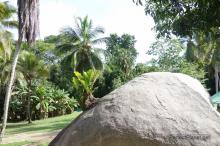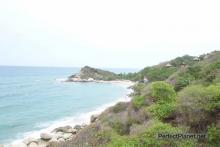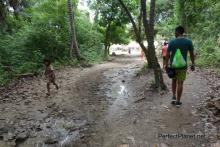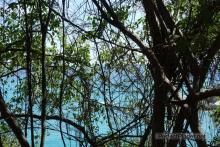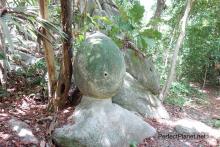Dawn at 6 o'clock, from the hammock you can see capybaras eating the fruit that falls from the trees.
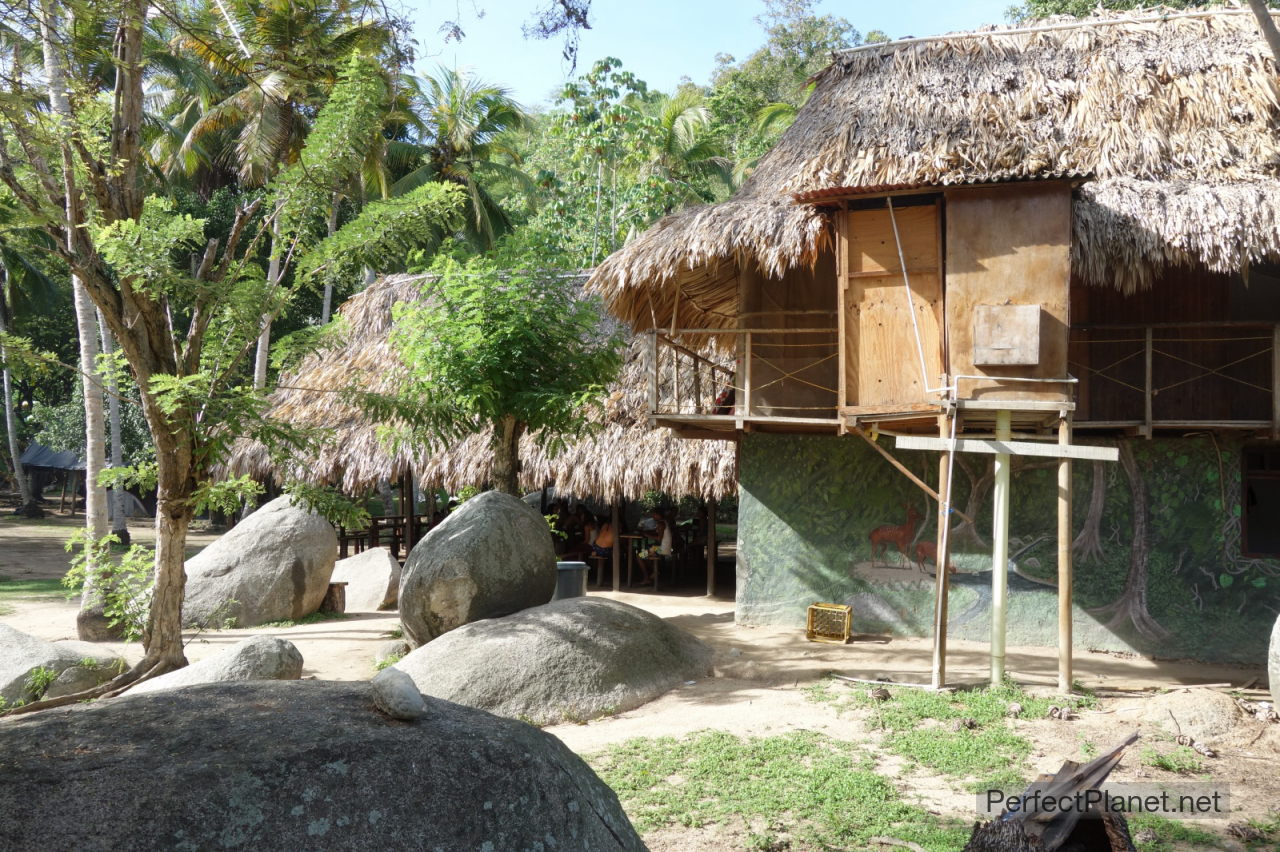
Don Pedro campsite Tayrona National Park
We walk out of the park enjoying the jungle and the beaches.
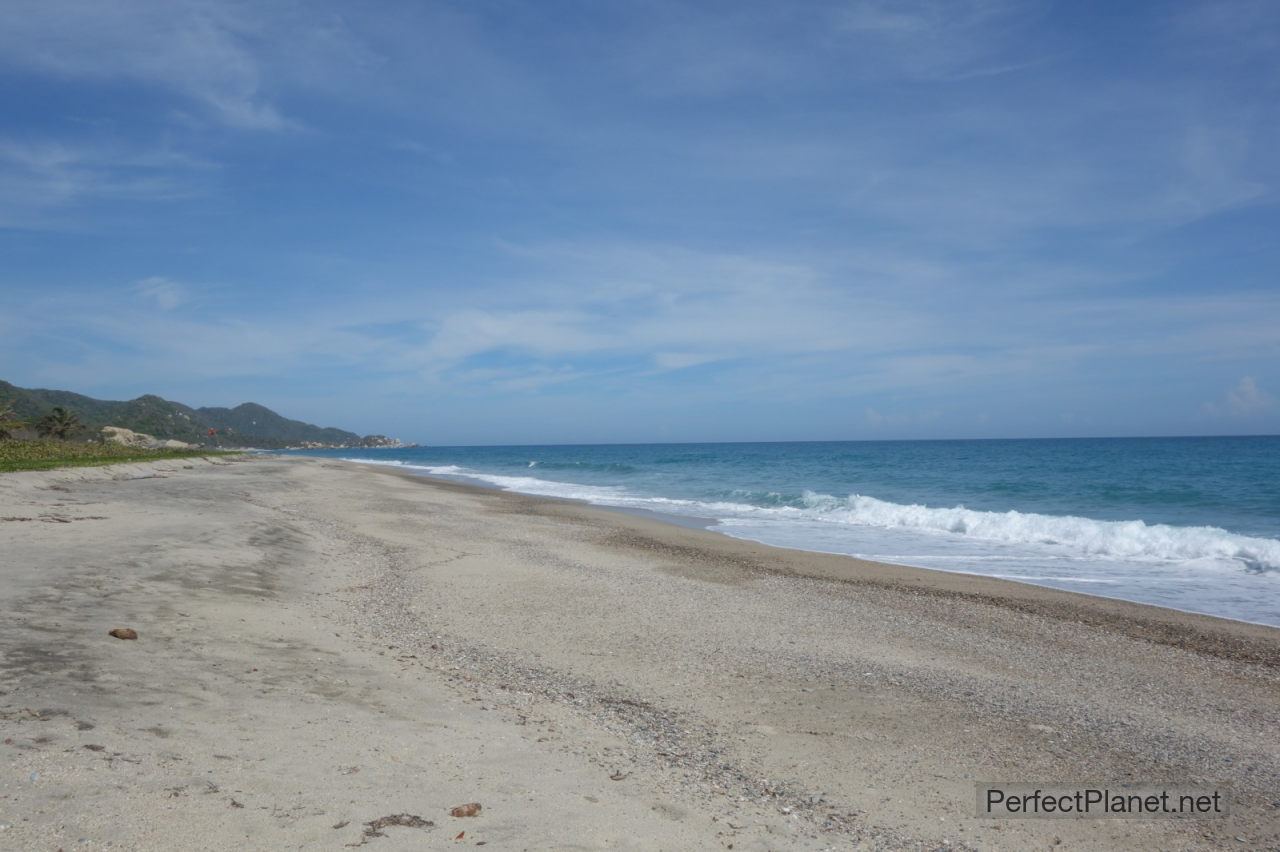
Tayrona National Park
We buy a coconut from some Tayrona Indigenous to drink.
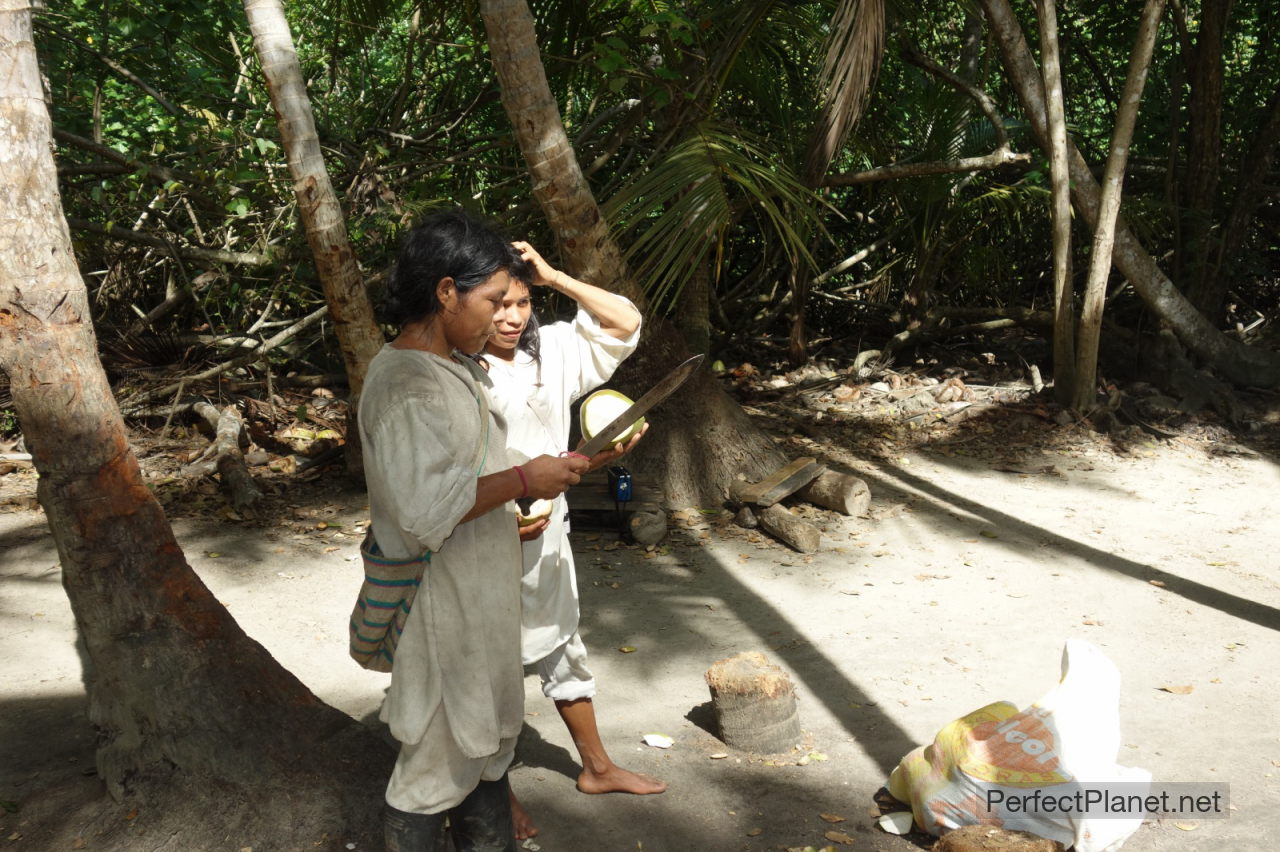
Indigenous in Tayrona National Park
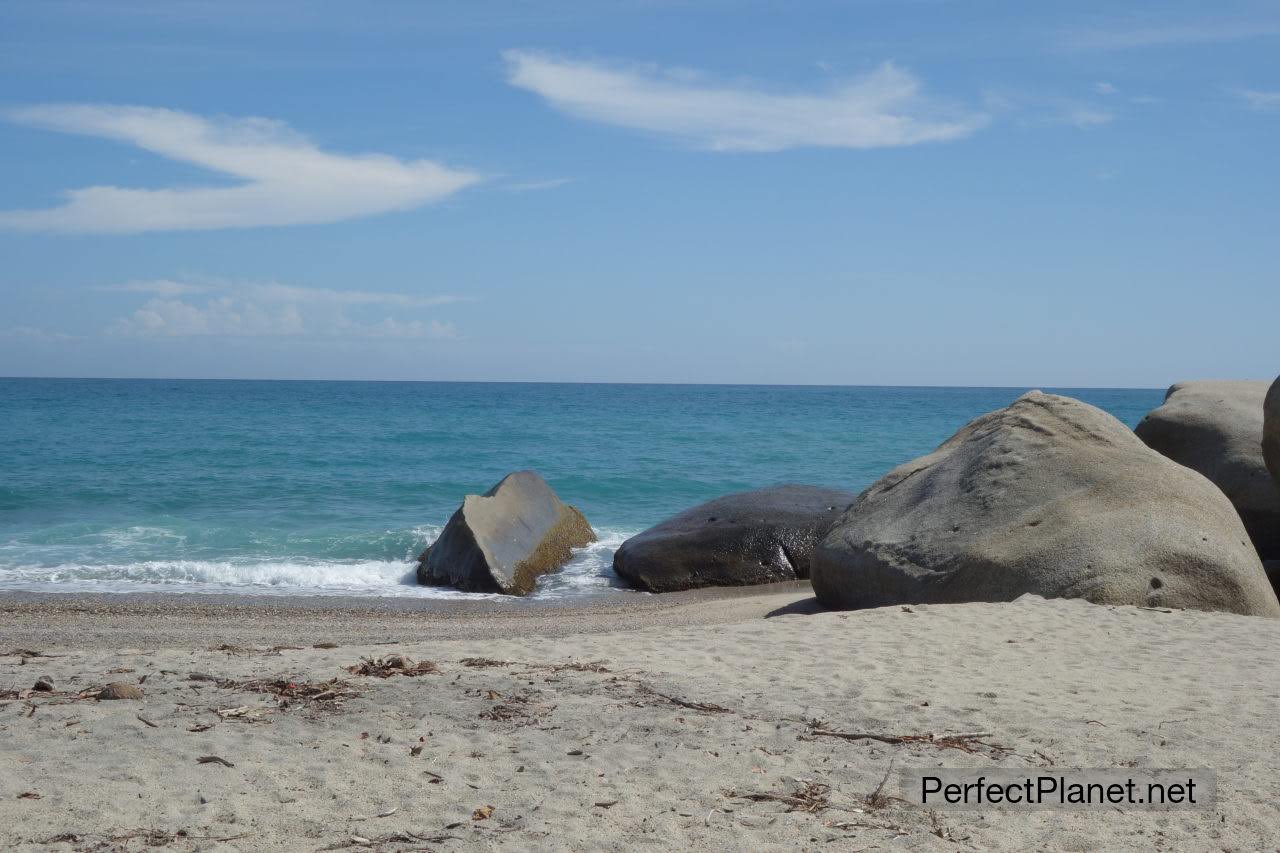
Tayrona National Park
When we arrive at Cañaverales we turn off to a lookout point with views of other magnificent beaches.
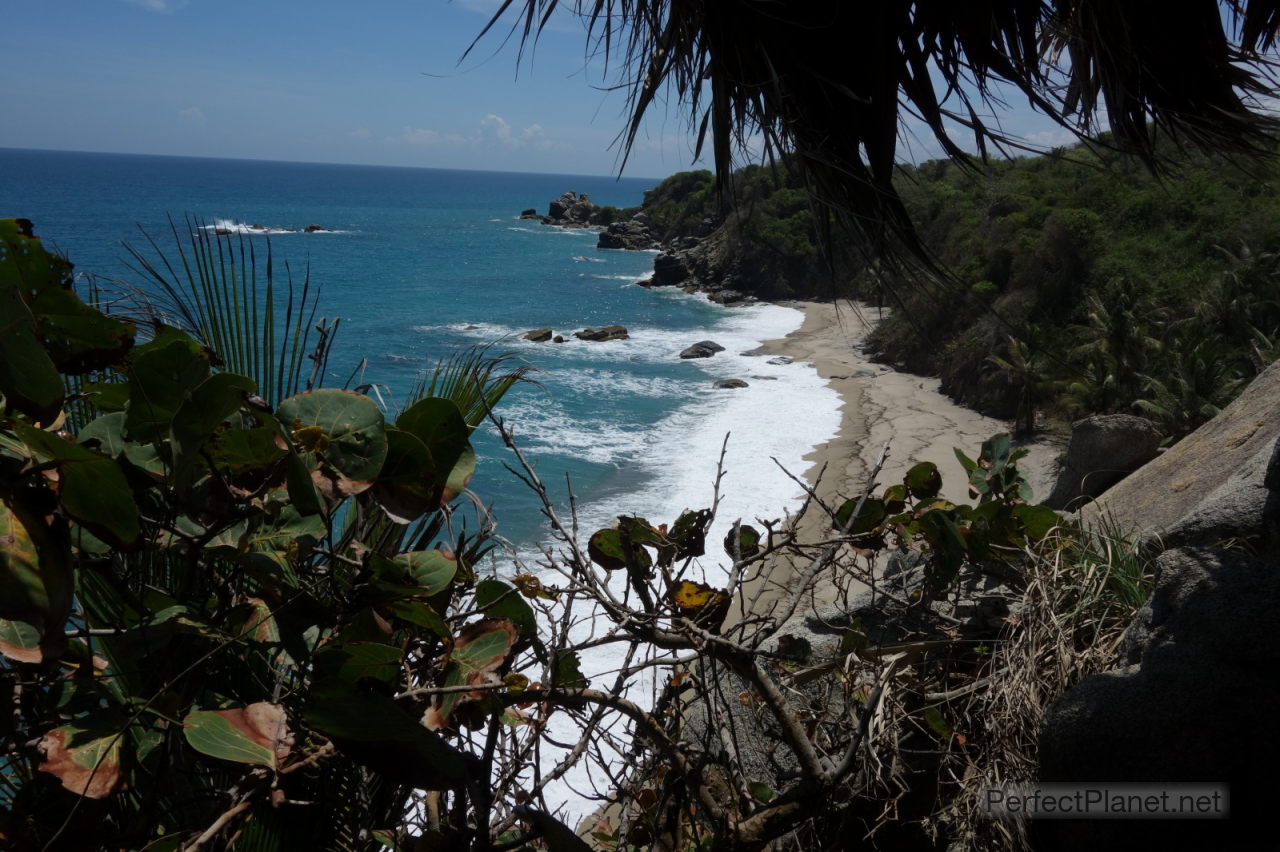
Tayrona National Park
We take a bus on the way out to Palomino, it takes more than 1 hour to get there.
The advantages of travelling by bus used by the local communities is that it gives you the opportunity to meet their people, the Colombians are especially friendly and are always willing to chat a while.

Palomino
We arrive in Palomino and look for accommodation. It is a small town in the Sierra Nevada with beaches for miles. It is flanked by two rivers and you have the opportunity to see Wayu Indians fishing.
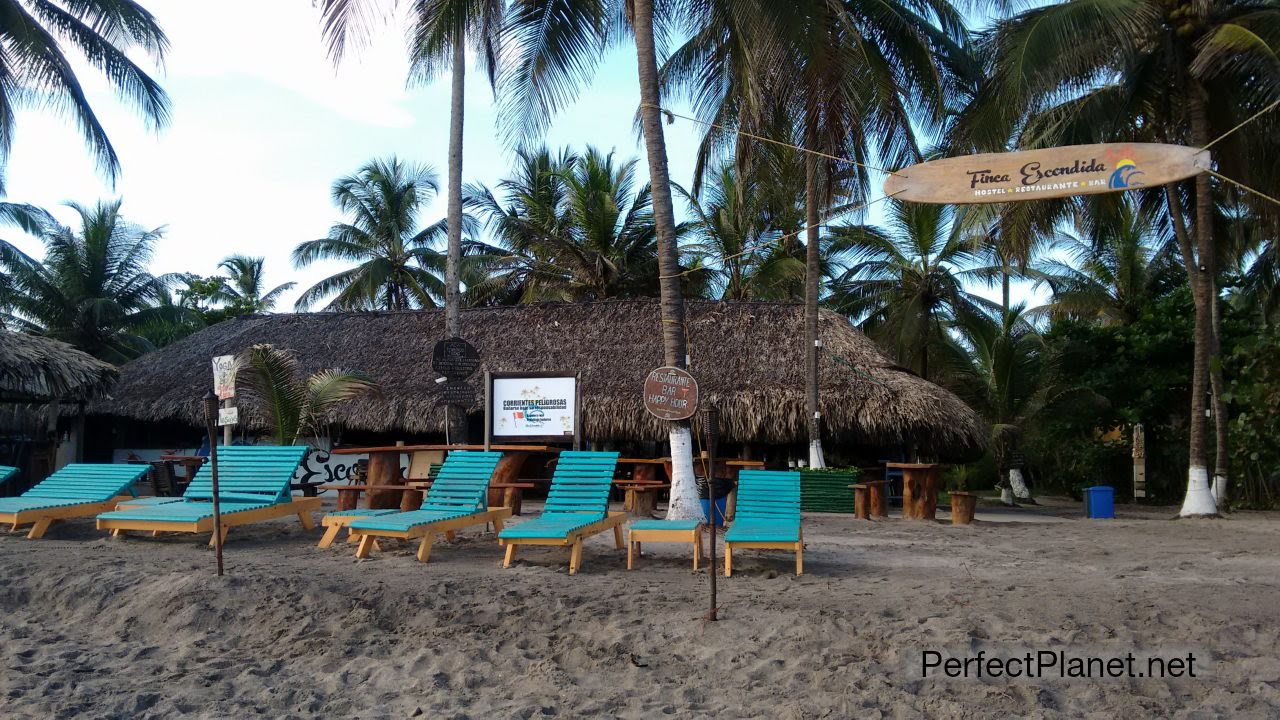
Palomino
However it is not as idyllic as it seems, especially if you come from the Tayrona. If you want to make excursions to the nearby mountains or on the way to the Guajira, it is a good base camp.
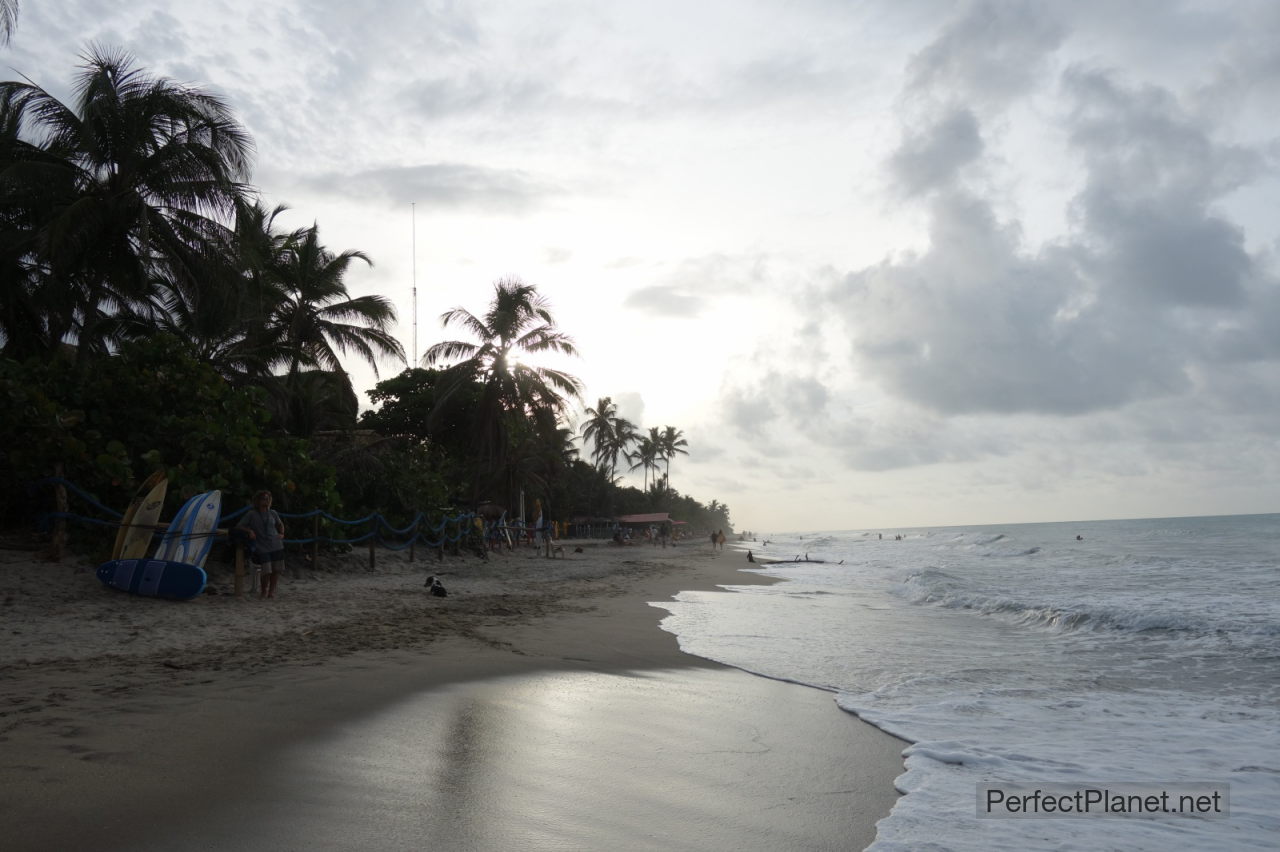
Palomino beach
The beach is very long and full of coconut trees, there are still virgin areas. We had a good swim although we have to be careful with the currents.
There are no cheap options to eat on the beach, there is a local restaurant but the prices are similar. It is better to go to the village or to the end of the beach near the river.
Breakfast at the Don Pedro campsite: 8,000 COP per pax.
Coconut bought from Indians: 4.000 COP.
Bus departure from Park: 3.000 COP per pax.
Bus from Tayrona to Palomino: 7.000 COP per pax.
Accommodation at Finca Escondida 20.000 COP hammock.
Beers 4.000 COP
Lunch: Estancia Escondida 18.000 COP per plate
Dinner: Pataconada, fruit crepes and juices.
- Log in to post comments

